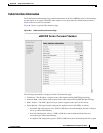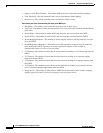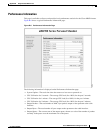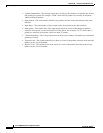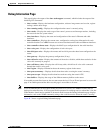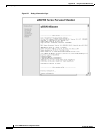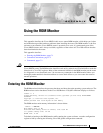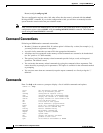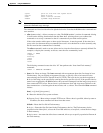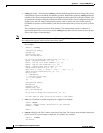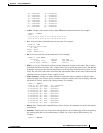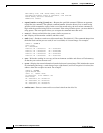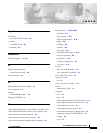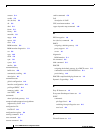
C-3
Cisco uBR924 Software Configuration Guide
OL-0337-05 (8/2002)
Appendix C Using the ROM Monitor
Commands
sysret print out info from last system return
unalias unset an alias
unset unset a monitor variable
xmodem x/ymodem image download
Note You can display additional details for a command by entering the command name with a -? option, which
prints the command usage message.
The commands are listed and described in alphabetical order. Note that the ROM monitor commands are
case-sensitive.
• alias [name=value]—Aliases a name to a value. The ROM monitor’s version of command aliasing
is based on the aliasing function built into the Korn shell. Aliasing allows you to abbreviate
commands or to set up a command so that it is automatically run with certain options.
If the value contains white space or other special characters, it must be quoted. If the value has a
space as the last character the next command line word is also checked for an alias (normally only
the first word on the command line is checked).
The alias command is used to set new aliases and to view the aliases that are currently defined. For
example, to display the currently set aliases, enter the alias command by itself:
rommon 1 > alias
r=repeat
h=history
?=help
b=boot
ls=dir
The following command creates the alias “bf” that performs the “boot from Flash memory”
command:
rommon 1 > alias bf “b flash:”
• boot or b—Boots an image. The boot command with no arguments boots the first image in boot
Flash memory. You can include an argument, filename, to specify a file to be booted over the
network using the Trivial File Transfer Protocol (TFTP). The local device (see the description of
b device following) can be specified by entering the device specifier (devid). If the specified device
name is not recognized by the ROM monitor, the system will attempt to boot the image (imagename)
from a network TFTP server. Do not insert a space between devid and imagename. Options to the
boot command are -x, load image but do not execute, and -v, verbose. The form of the boot command
follows:
boot [-xv] [devid] [imagename]
b—Boots the default (first) system software.
b filename [host]—Boots using a network TFTP server. When a host is specified, either by name or
IP address, the boot command will boot from that source.
b flash:—Boots the first file in Flash memory.
b device:—Boots the first file found in the Flash memory device. The Flash memory device
specified can be either flash:, to boot the Cisco IOS software, or bootflash:, to boot the boot image
in Flash memory.
b device:name—An extension of the above command, allows you to specify a particular filename in
the Flash memory.



